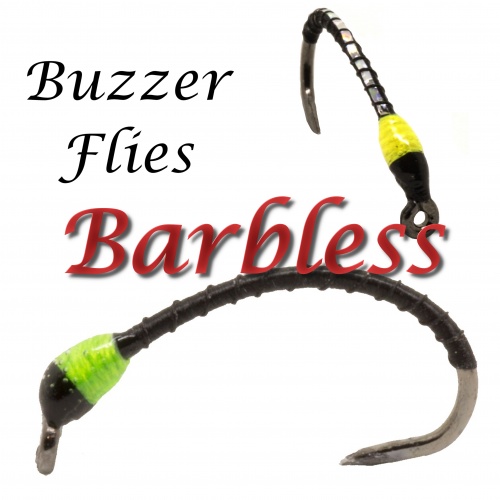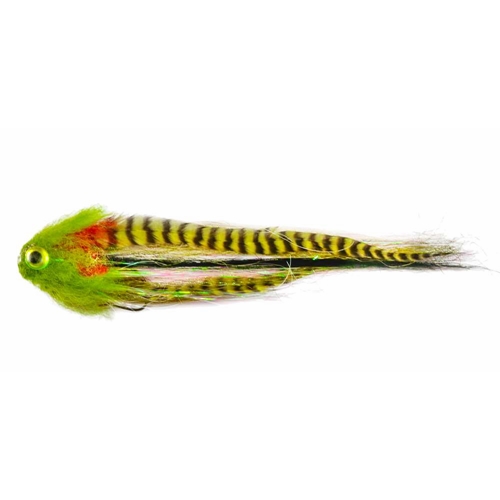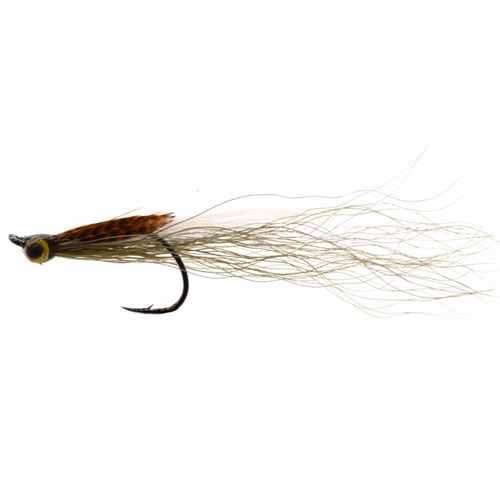Olive Fraser Nymph
Naturally, there’ll be countless buzzers hatching and the trout will be fat from recent hawthorn fly activity. Yet, better is to come in the form of lake and pond olive hatches. Both these species of upwing fly are difficult to tell apart, so we needn’t worry about exact identification.
Tying The Olive Fraser Nymph
Hook: Kamasan B-170 size 12
Thread: Semperfli 12/0 pale olive classic waxed
Rib: Semperfli Fluoro-brite No12 thread
Tail & Body: Hen pheasant centre tail fibres
Thorax Cover: Wapsi mottled oak Thinskin
Thorax: Olive kapok dubbing
Legs: Hen pheasant tail fibres
Tying Tips:
For a slightly faster sinking fly, rather than add lead, use a hook with a heavier gauge, like the Kamasan B-175.
For a more robust dressing, apply a thin bead of varnish along the hook shank prior to winding the hen pheasant fibres.
Kapok
Kapok is a moisture-resistant, quick-drying, resilient, and buoyant fibre and weighs only one-eighth as much as cotton. Kapok has been used in life jackets and life boats, supporting as much as 30 times its own weight in water. Additionally with Kapok buoyancy is lost slowly, we have left it for days in test baths and it very slowly over days absorbs water.
Traditionally Kapok is very difficult to dye however the team at Semperfli have been working with computer based dying machinery which has enabled it to bulk dye Kapok with repeatable colours every time. Working with their Pro Team they defined a range of very natural / earthly dubbing colors to produce the best dry fly dubbing available in the market.
Individual Kapok fibres are on average 1.8cm/0.7”, with diameters of 30 to 36 micrometres (a micrometre is about 0.00004 inch) making it finer than even the smallest superfine dubbing, indeed HALF the thickness of superfine dubbings.
- Kapok has a natural buoyancy so floatant is not necessary
- Use for bodies or thoraxes, perfect for any dry flies
Fishing Tips
Although it’s normal to fish three flies when nymphing, often a brace of nymphs give you an edge, in terms of covering moving trout quickly and without fuss. So you’re best off arranging two Fraser nymphs some 5ft apart on Wychwood 5.5lb silk mode, with a further 3ft of silk mode to a tapered leader of 6ft, to give you an overall leader of 14ft.
When searching water, ideally, look for a cross-wind, so your flies be fished round on a seductive curve. This is best achieved using a floating line. A weight forward of a more conspicuous colour is not only easier to see and therefore help with take detection. Customers seem to like the Cortland WF 333 because of its striking yellow colour.
To help detect takes, it’s best to watch the sagging fly line off your rod, by holding the tip approx 1ft clear of the water surface. If this lifts, or falls back slightly when retrieving then tighten immediately. A steady, but smooth figure-of-eight retrieve usually works best for this style of nymphing.



















